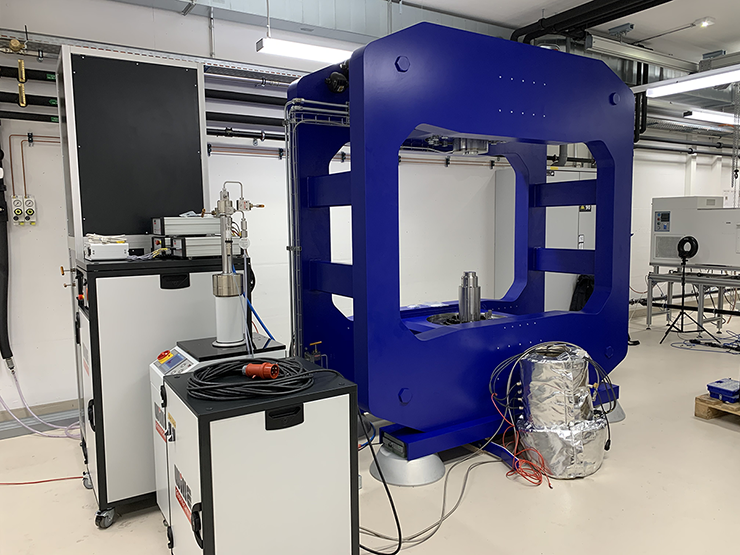2020-02-17
LabQuake: taking lab scale studies of earthquakes to the next level
In the beginning of February, the Swiss Seismological Service (SED) at ETH Zurich received a very special delivery: An 11-ton and 2.4 x 2.5 x 1 meters machine that can induce small earthquakes in palm-sized rock samples under conditions that are representative for the Earth’s crust in 4–8 km depth. This apparatus is called LabQuake and has been installed in the Rock Physics and Mechanics Laboratory under the responsibility of Dr. Claudio Madonna. LabQuake will enable a new research direction for the SED – Laboratory Seismology – aimed at gaining a better understanding of earthquake physics, for example in the context of induced earthquakes triggered by deep geothermal stimulations. Dr. Paul Selvadurai is leading the newly created Laboratory Seismology research group.
To develop a better understanding of nature, scientist often examine complex problems in the laboratory where they control the environment, repeat experiments and place dense arrays of sensors. With LabQuake, scientists induce tens of thousands of very small earthquakes – so-called nano-seismic events that produce the same order of energy as an insect flapping its wings once – in rock samples and observe how they form, what controls them, and why they cease. To this end, LabQuake is equipped with various sensors, measuring in great detail the evolution of nano-seismicity, strain and pore-pressure within the rock sample.
Read more...Unique in the world
LabQuake exposes rock samples of a maximum size of 7.6 cm to conditions at which deep geothermal energy plants operate: temperatures of up to 170° Celsius and a confining pressure of 170 MPa, which corresponds approximately to 1678 atmospheres or a 17.3 km high water column. The maximum force that the scientists can apply to the rock samples equals to the weight of 125 mid-size SUVs (about 2500 kN).
One of the first applications of LabQuake will be to repeat experiments on rock samples collected in underground research labs. LabQuake ideally supplements experiments at the deca-meter scale performed in the Grimsel In-situ Stimulation and Circulation (ISC) project. Scientists test hypotheses from this project and downscale them to LabQuake. Afterwards, they upscale the new findings and apply them to field scale experiments that are conducted within the Bedretto Laboratory for Geoenergies. Hence, LabQuake bridges the gap between projects at different scales and contributes to improve their accuracy and their performance.
The finances for LabQuake amount to roughly 1.2 million Swiss Francs and were secured through the start-up fund of the Professorship Wiemer, with contributions from the SNF R-equipment programme, the ETH equipment programme and the department of Earth Sciences.
To see how LabQuake was delivered to the SED, watch the time-lapse video here.
